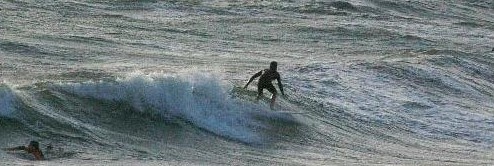It was one of those black northerlies. Sailing had been cancelled for the day. The blustery north wind had been blowing at thirty plus knots and had brought a thick cloud of red dust from the Mallee up in northern Victoria. The red dust was so thick that you could hardly see across the road. It got into your mouth and nose, and everything that you touched felt gritty. The temperature had reached 40C by mid morning, and it was a most unpleasant day.
A boat had been purchased by two would-be fishermen. It had been lying unattended up in the Yarra River for quite a long time. It was a ketch by the name of Henrietta and it had been allegedly sold for the princely sum of two hundred pounds. The two men planned to go cray fishing off the coast of Tasmania. Neither man had any experience with boats, let alone sailing.
As bad luck, or maybe good luck, would have it, they set sail that morning from the river while it was still calm but by the time they reached the mouth, the northerly had set in and things had got out of control. By the time they reached Hobsonís Bay, the motor had given up, so the decision was made to sail while one of them went below to try and get the motor going again. So they hoisted a head sail and the gaff-rigged mainsail with a lot of difficulty, and while one of them was below, the other attempted to sail the boat down the bay.
By the time Henrietta was off St Kilda the wind had reached full force and an accidental jibe from starboard to port headed the boat straight for the strip of beach between the St Kilda baths and the dinghy club.
It was early afternoon and a lot of members were still at the club. On days like this there were always lots of little jobs that could be done on the boats, and there was always plenty to chat about.
Henrietta was first noticed when she was about half a mile from the beach, and it was obvious that she was in trouble with the mainsail right out and flogging, and the boat out of control.
To our dismay the boat headed for the beach and struck the only small patch of rock in the vicinity between the Sea Baths and Brookís Jetty.
The boat was hard aground and laying over to starboard in waist-deep water. The water there would normally be considerably deeper, except that with the very strong northerly blowing, the bay tends to drain at the northern end and this extends the normally small tide range.
A group of members from the club waded out to the stricken boat and offered to help move it out to deeper water. We could have mustered up to thirty helpers, and with the help of the clubs rescue boat and a line to the top of the mast to heel the boat further, it would have been easy. But no, the owners decided that as the tide was low the boat would float off tomorrow on the high tide, and besides it would be a lot more convenient to work on the engine with the boat not rolling around.
And so Henrietta was still sitting there when we left to go home that Saturday afternoon.
That evening, after a very hot and windy day the weather broke and the inevitable cool change came in from the south-west. It was the usual violent thunder storm with lots of wind, and it raged for several hours.

The aftermath of a storm on Port Phillip. (surprisingly rough at times)
After storms it was not unusual to have to repair the clubs rigging deck which sloped down on an angle from the club house to the water, and it was surprising how far up the waves had come, and on odd occasions it was even possible to surf on the waves created by these storms.
Next morning it was a surprising sight. There was Henrietta half way up the beach; a hole in the starboard side, some planks were sprung from the stem, the rudder was gone, and the owners were trying to salvage what they could. The boat had been declared a write-off; she was obviously pretty rotten any way. The owners didnít seem too unhappy, after all, the event could have saved their lives, taking a rotten boat to fish Bass Strait would have been fatal anyway. Some smart fellow had come along and offered them a hundred pounds for the three ton lead keel, and lead was very expensive and hard to find so soon after the war, so he appeared happy about that deal too.
By the following Saturday morning most of the boat was gone, and a small crane truck arrived to drag the keel up to the wall. We of course wandered over to have a look just at the time the keelís new owner discovered that the keel he had bought was a lump of concrete, there was no lead in the keel at all.